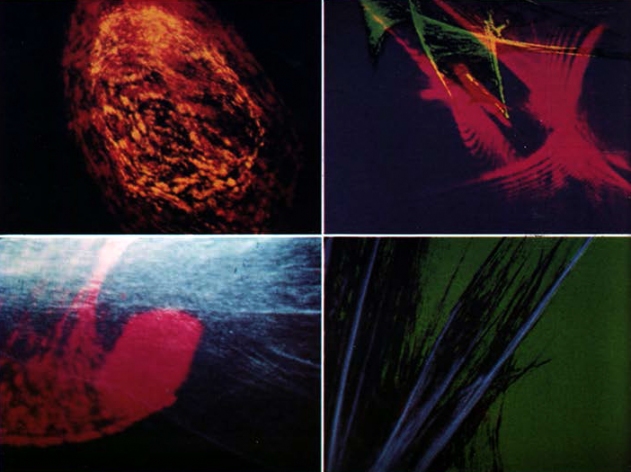Forget that cheesy Pink Floyd stuff from the planetarium. Scientist Elsa Garmire used optic chops to make lasers into a real instrument – and her work holds up today.
Sound and light artist and researcher Derek Holzer spotted this one; don’t miss his vector work and other synesthetic studies. It’s not a new article, but this story from Sloan Science & Film, Museum of the Moving Image in Queens, New York is worth visiting now.

What’s telling is, it took an optical scientist and physicist to push the medium aesthetically. So even though Dr. Garmire was at a center that brought together engineers and artists – the legendary Experiments in Art and Technology (E.A.T.) – it was really her deep knowledge of how the technology worked that drove her to make something aesthetic, even when others were not.
As she told Science & Film:
There was a standard way of putting X-Y mirrors on the laser and getting what us scientist’s call Lissajous figures, which are sort of ovals. You can get lots of ovals of different sizes, moving in different directions, and you can run them with music and get a kind of wild pattern that to me has no aesthetic value at all,
That aesthetic virtuosity is just as impressive now – maybe more so, having seen what we’ve seen – as it must have been in the 70s. Working with filmmaker Ivan Dryer and Dale Pelton, her exquisite light performances were captured on film and presented in public, and as a result helped launch the whole laser industry. Going back to this early work is like watching Clara Rockmore on a Theremin, though – a deep level of virtuosity in a new medium that has been tough to match since. (Just, in this case, Dr. Garmire was essentially Clara and Lev Termen, all in one – player and engineer.)
Go to their article and scroll down to take in LASERIMAGE, and do check the whole article; it’s fascinating:
Their gallery on science and cinema is worth a long, long look, especially for those of us who love that intersection – more like this, please:
Here is Dr. Garmire at a lecture at the museum last year:
And she brought lasers, too:
On May 31, 2019, the Museum of the Moving Image’s Science on Screen series (movingimage.us/scienceonscreen), presented six short films by experimental film and light show pioneers. The screening was followed by a live laser demonstration by physicist Elsa Garmire, and a discussion between Garmire, Joshua White, and AJ Epstein moderated by Executive Editor and Associate Curator of Science and Film Sonia Epstein. More: movingimage.us/scienceonscreen
Let’s linkhole a little further, though, because the 1973 film she worked on Death of the Red Planet was also a major moment in immersive sound, featuring what composer Barry Schrader claims was the “first quadraphonic electronic music soundtrack composed for a motion picture.” (Given my forays into Soviet audiovisual experimentation, I’m not sure everyone is comparing their notes between east and west on the “first” business, but – it at least counts as pioneering, even if “first” is always a risky word to use. Ditto the “first” laser show referenced in the article above.)
That score was made on the Buchla 200 system, so have at this juicy link here:
https://barryschrader.com/death-of-the-red-planet
Best of all, there is a full scan of the write-up of this film from American Cinematographer at the time. Yeah, cinematographer this!
https://econtact.ca/11_4/pelton_red_planet.html
As artists like Robert Henke and emerging artists around the world rediscover lasers, it seems now is the perfect time to connect their modern computer-controlled experiments with the history of the field. Watch this space.
And I’ll be eagerly anticipating the upcoming documentary on the topic the Sloan folks promise in the article.